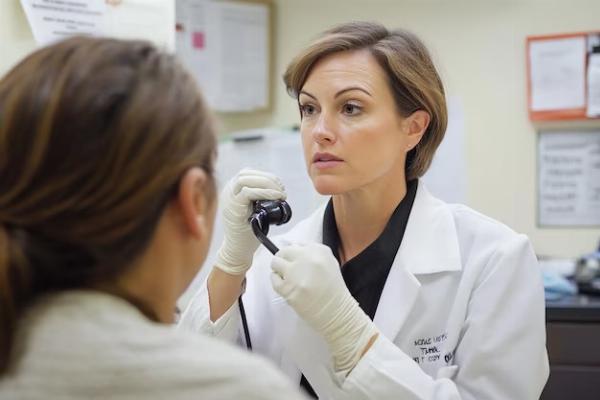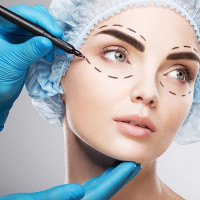Common and Aberrant Moles: Using Dermoscopy for Differential Diagnosis

Strong 8k brings an ultra-HD IPTV experience to your living room and your pocket.
Moles are common skin growths that most people have, but while they are generally harmless, some can develop into skin cancer, including melanoma. Understanding how to assess moles effectively is crucial for early detection and prevention. Dermoscopy, a non-invasive diagnostic tool, has revolutionized the way healthcare professionals evaluate moles, making it easier to distinguish between benign and malignant lesions. This article explores the science behind Dermoscopy Mole Evaluation in Dubai and offers insights into how it works for mole assessment.
What Are Moles and Why Do They Matter?
Understanding Moles
Moles, or nevi, are clusters of pigmented cells that appear on the skin as small, dark spots. They vary in color, shape, and size, and can appear anywhere on the body. Most moles are benign, meaning they are non-cancerous and do not pose a threat to health. However, in some cases, moles can change over time, becoming larger, darker, or irregular in shape, which can be a sign of malignancy.
The Importance of Monitoring Moles
Monitoring moles is essential because early detection of changes can be life-saving. Skin cancer, particularly melanoma, can develop from existing moles or appear as new growths. Melanoma is the most dangerous form of skin cancer due to its potential to spread to other parts of the body. Therefore, regular self-examination and professional assessment are vital for identifying any suspicious changes early on.
What Is Dermoscopy?
The Basics of Dermoscopy
Dermoscopy, also known as dermatoscopy or epiluminescence microscopy, is a diagnostic tool that enhances the visual examination of the skin. It involves using a dermatoscope—a handheld device with a magnifying lens and a light source—to closely examine the skin's surface. This tool allows for the visualization of structures within the skin that are not visible to the naked eye, such as pigment patterns, blood vessels, and other features.
How Dermoscopy Enhances Mole Assessment
Dermoscopy enhances mole assessment by providing a clearer view of the skin's structure. It helps dermatologists differentiate between benign and malignant lesions with greater accuracy. By examining the specific patterns and features of a mole, such as symmetry, border, color, and internal structure, healthcare providers can make more informed decisions about whether a mole requires further investigation or treatment.
The ABCDEs of Mole Assessment
A: Asymmetry
One of the key indicators of a suspicious mole is asymmetry. A benign mole is typically symmetrical, meaning that if you draw a line through the middle, the two halves would match. In contrast, melanoma lesions are often asymmetrical, with one half looking different from the other.
B: Border
The border of a mole is another critical factor in assessment. Benign moles usually have smooth, even borders, while malignant moles often have irregular, scalloped, or poorly defined edges.
C: Color
Moles can come in various colors, but a consistent color throughout the mole is usually a sign that it is benign. Moles with multiple colors, such as different shades of brown, black, red, white, or blue, may be indicative of melanoma.
D: Diameter
While not all large moles are dangerous, size can be a factor in determining risk. Moles larger than 6mm in diameter (about the size of a pencil eraser) are more likely to be problematic, especially if they are changing or growing.
E: Evolution
The most crucial factor in mole assessment is evolution or change. Any mole that changes in size, shape, color, or texture over time should be evaluated by a healthcare professional. Other changes, such as bleeding, itching, or crusting, are also warning signs that warrant further investigation.
How Dermoscopy Improves Diagnostic Accuracy
The Role of Dermoscopy in Early Detection
Dermoscopy plays a crucial role in the early detection of skin cancer by allowing for the detailed examination of moles and other skin lesions. The enhanced visualization provided by the dermatoscope enables healthcare providers to identify subtle changes and patterns that may not be apparent during a standard skin exam. This increased level of detail can lead to earlier diagnosis and treatment of skin cancer, improving patient outcomes.
Differentiating Between Benign and Malignant Lesions
One of the primary benefits of dermoscopy is its ability to help differentiate between benign and malignant lesions. By examining the specific features of a mole under magnification, dermatologists can identify patterns that are characteristic of melanoma or other types of skin cancer. For example, dermoscopy can reveal irregular pigment networks, atypical blood vessel patterns, or specific types of skin structures that are associated with malignancy.
Reducing the Need for Unnecessary Biopsies
While biopsies are the gold standard for diagnosing skin cancer, they are invasive and can cause discomfort for patients. Dermoscopy reduces the need for unnecessary biopsies by providing more accurate assessments of moles. If a mole appears suspicious under dermoscopy, a biopsy can be performed to confirm the diagnosis. However, if the mole appears benign, the patient can be spared the procedure.
The Limitations of Dermoscopy
The Importance of Expertise
While dermoscopy is a powerful tool, its effectiveness largely depends on the expertise of the healthcare provider using it. Proper training and experience are essential for accurately interpreting the findings from a dermatoscope. Misinterpretation of dermoscopic features can lead to incorrect diagnoses, which is why it is crucial to seek evaluation from a qualified professional.
Not a Standalone Diagnostic Tool
It is important to note that while dermoscopy greatly enhances mole assessment, it is not a standalone diagnostic tool. It should be used in conjunction with other methods, such as patient history, visual examination, and biopsy, to provide a comprehensive evaluation. Dermoscopy is an invaluable tool in the diagnostic process, but it is not infallible.
When to Seek Professional Evaluation
Recognizing Suspicious Changes
Self-examination is an essential part of mole assessment, but it should not replace professional evaluation. If you notice any suspicious changes in your moles—such as those described in the ABCDEs—it is important to seek evaluation from a dermatologist. Early detection and treatment are key to preventing the progression of skin cancer.
Regular Skin Checks
Regular skin checks by a healthcare professional are recommended, especially for individuals with a higher risk of skin cancer. This includes those with a family history of the disease, fair skin, a large number of moles, or a history of excessive sun exposure. Regular check-ups can help detect any new or changing moles early, increasing the chances of successful treatment.
Conclusion: The Power of Dermoscopy in Skin Health
Dermoscopy has revolutionized the way moles and other skin lesions are assessed, offering a non-invasive, detailed examination that can aid in the early detection of skin cancer. By enhancing the ability to differentiate between benign and malignant lesions, dermoscopy reduces the need for unnecessary biopsies and contributes to better patient outcomes. While it is not a standalone diagnostic tool, when used by trained professionals, dermoscopy is a powerful method for maintaining skin health and preventing the serious consequences of untreated skin cancer. Regular skin checks, both self-exams and professional evaluations, combined with the insights provided by dermoscopy, are crucial steps in safeguarding your skin against the risks of melanoma and other skin cancers.
Note: IndiBlogHub features both user-submitted and editorial content. We do not verify third-party contributions. Read our Disclaimer and Privacy Policyfor details.


